Tet Nguyen Dan (Lunar New Year) – Vietnam’s Most Important Festival
Should you be visiting Vietnam or inquisitive about one of the most significant cultural events taking place here, Tet Nguyen Dan—often known as Tet—should be on your radar. Tet embodies the height of family unity, cultural preservation, and fresh starts more than just a holiday. Vietnam comes alive at this season with vivid colors, aromatic cuisine, and centuries-old customs spanning the past and the present. Let MOTOGO Tours explore.
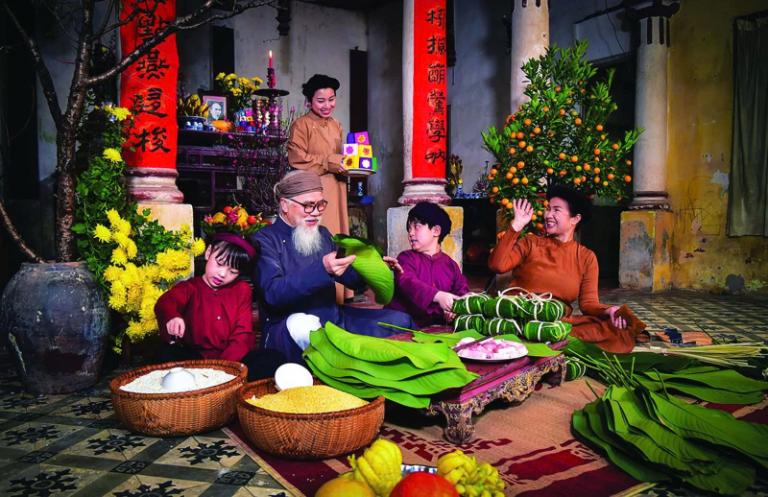
The Origins of Tet Nguyen Dan ( Lunar New Year)
Deeply ingrained in Vietnam’s agricultural past, Tet’s heritage stretches thousands of years. It was customarily a celebration of the end of the lunar year, a means of thanksgiving to the gods, and a welcome of spring. Among the most important times in the farming calendar, Tet also marks the beginning of a new agricultural cycle for the Vietnamese. Though Tet has changed with Buddhist, Confucian, and Taoist ideas over time, fundamentally it is still a time for family, spirituality, and new begins.
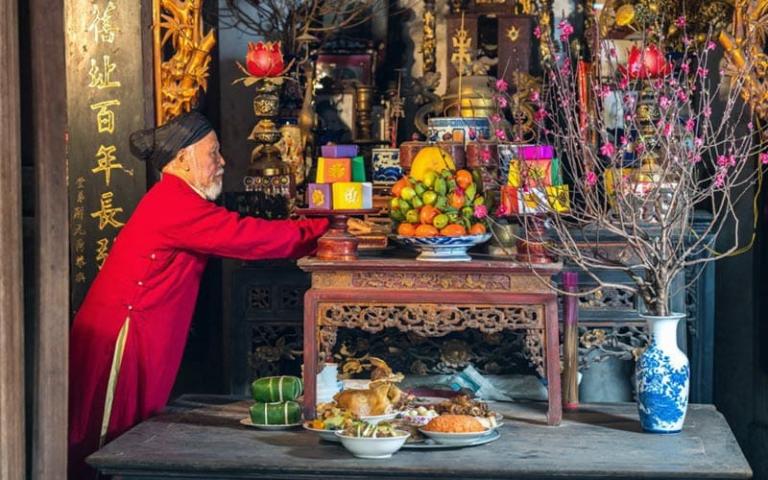
Early Tet rituals centered on ancestral worship and respect for gods such as Ong Tao, the Kitchen God, who climbed to the skies to document household activity. Families would present food and prayers in the expectation of getting benefits for the next year. Exensive preparation for these ceremonies reflected Tet’s great cultural relevance in preserving a link with earlier generations.
Tet changed to represent the times as Vietnam experienced social, political, and economic transformations. The basic customs stayed the same, but Tet also adopted contemporary ideas including national holidays and big city events. Tet is a special combination of Vietnam’s cultural legacy and its development into a modern society since old and new coexist.
Tet Nguyen Dan’s Significance in Vietnamese Culture
Tet is not only one of festivals in Hanoi —every component has great symbolic value. From the dishes made to the prayers spoken, Tet stands for rebirth, the opportunity to move past and begin anew.
Symbolism of Tet
Tet’s basic symbols are the peach blossom (hoa dao) in the north and the apricot bloom (hoa mai) in southern Vietnam. These flowers, which blossom in spring, are supposed to bring prosperity and fortune. Using gold and crimson ornaments also captures the yearning for riches and success.
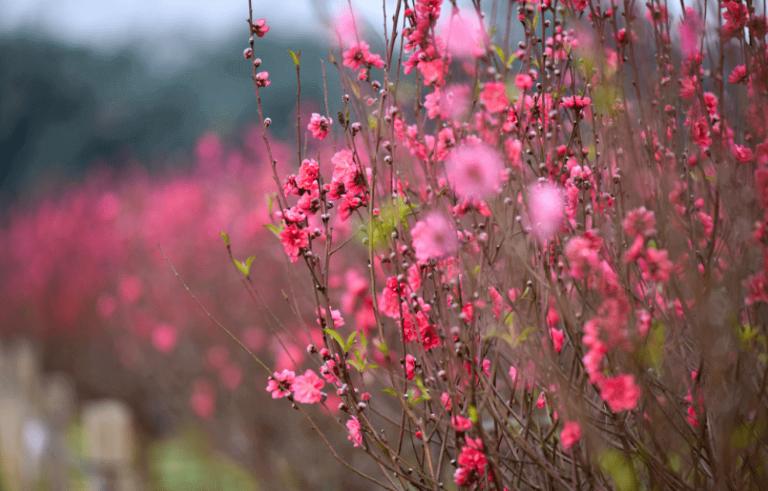
Family and Community during Tet
The center of Tet is family. Vietnamese citizens, wherever they dwell, make it a point to go back to their hometowns to see relatives. Tet is considered as a holy time when reverence for elders and ancestors is paid, family ties are reinforced, and complaints are pardonable.
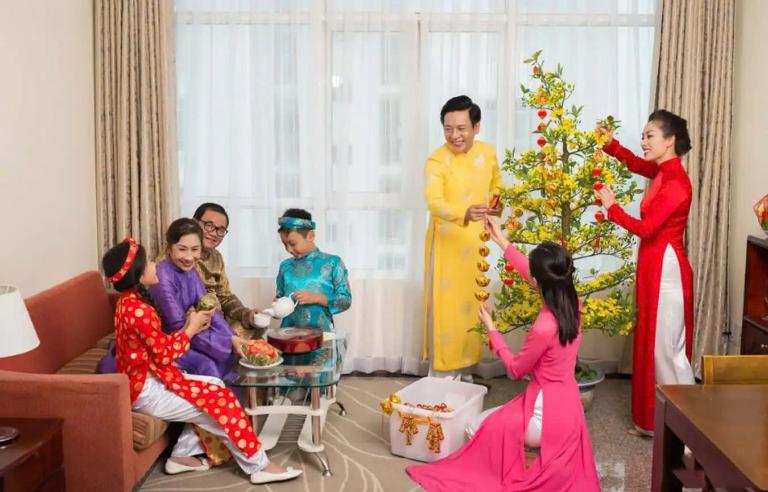
>>> Explore: Mid-Autumn Festival in Vietnam: Traditions, Mooncakes, and Lanterns
Preparation for Tet Nguyen Dan
Starting weeks before the actual festivities, preparation for Tet Nguyen Dan, Vietnam’s Lunar New Year is a complex and significant procedure. For many Vietnamese people, this is a time for rebirth in terms of family ties, conflict resolution, house cleaning and preparation as well as in terms of fresh year objectives.
Cleaning the House and Personal Renewal
Cleaning the house—a habit known as “don nha don Tet,” or “sweeping away the old year,” is one of the earliest and most crucial stages in Vietnamese preparation for Tet. This symbolic action transcends simple hygienics. Vietnamese people are said to be able to eliminate the dust and negativity of the last year by carefully cleaning their houses, therefore opening the path for luck, health, and wealth in the next year.
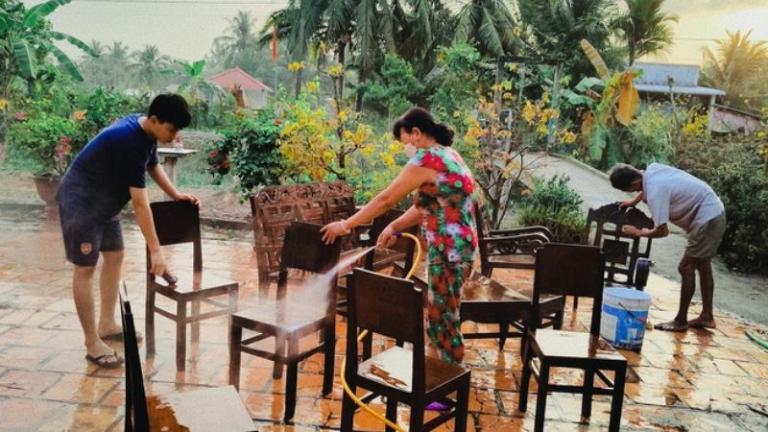
The house is polished, dusted, and every nook swept. Families especially devote great attention to their ancestral altars, which form the focal point of most houses since they allow offerings to ancestors during Tet. Since this is considered as a symbol of respect to one’s ancestors, special attention is paid to guarantee the altar is immaculate and well-kept. New Tet ornaments cover houses as old decorations are replaced.
Shopping for Tet Nguyen Dan: Foods and Decorations
Local marketplaces and stores are busiest than ever in the weeks before Tet. Shopping for Tet is a celebratory pastime in and itself; streets lined with vibrant booths offering Tet flowers, fruits, and other objects with symbolic importance.
Flowers and Fruits for Tet
Tet ceremonies revolve on flowers, thus selecting the appropriate blossoms is quite important. While in the north peach blossoms are more common, in the southern parts of Vietnam people purchase apricot blossoms. These flowers are especially kept in homes, offices, and companies since they are supposed to bring good prosperity. Common decorations during Tet are also kumquat trees, whose orange fruits stand for success and riches. To call luck and wealth, they are placed in houses and at store front doors.
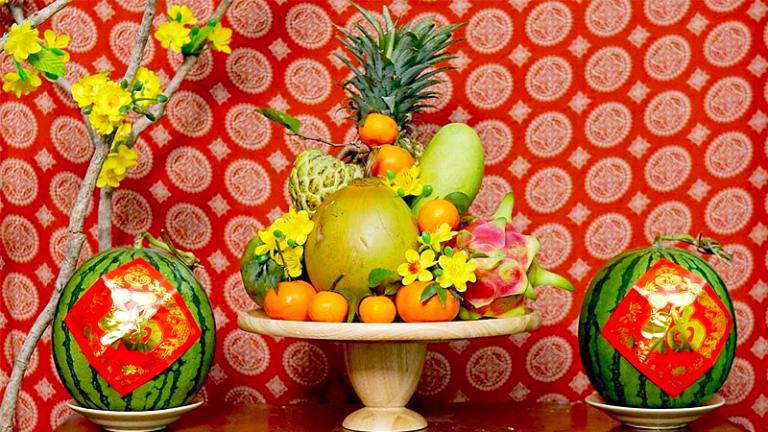
Along with flowers, Tet ceremonies revolve much upon fruit trays (mam ngu qua). Usually featuring five varieties of fruit selected for their symbolic connotations, these trays reflect different geographical contexts. Popular fruits are bananas, watermelons, papayas, and mangos; each kind reflects a distinct wish for the next year. Usually shown on the family altar as tributes to ancestors during Tet, these trays
Tet Decorations
Another crucial chore in getting ready for Tet is home decoration. Families display red and gold decorations including chuc mung nam moi (Happy New Year) banners, lanterns, and paper cuttings aside from flowers and fruit. In Vietnamese civilization, red and gold are regarded as lucky colors that stand for riches, happiness, and good fortune. Made beforehand to be given to children and elderly relatives during the festival, crimson envelopes (bao li xi) also contain blessings.

Calligraphy, another classic ornament, usually shows characters for words like “peace” (binh an), “happiness” (hanh phuc), or “wealth” (phu quy). Sometimes calligraphers are invited to local markets or homes to make these ornamental works, which then take front stage in the residence.
Preparing Traditional Tet Foods
Though it’s also one of the most satisfying, food preparation is maybe the most labor-intensive aspect of getting ready for Tet Nguyen Dan. Tet is well-known for its extravagant feasts; many of the delicacies presented during this time have been handed down through the years, each with great cultural value.
Banh Chung and Banh Tet
Traditionally made with sticky rice, mung beans, and pork, Banh Chung and Banh Tet are central dishes of Tet celebrations wrapped in banana leaves and simmered for several hours. Banh Tet is cylindrical, signifying the sky; Banh Chung is square, signifying the Earth. Deeply ingrained in Vietnamese cosmology, these cakes are seen to depict the equilibrium between heaven and earth.
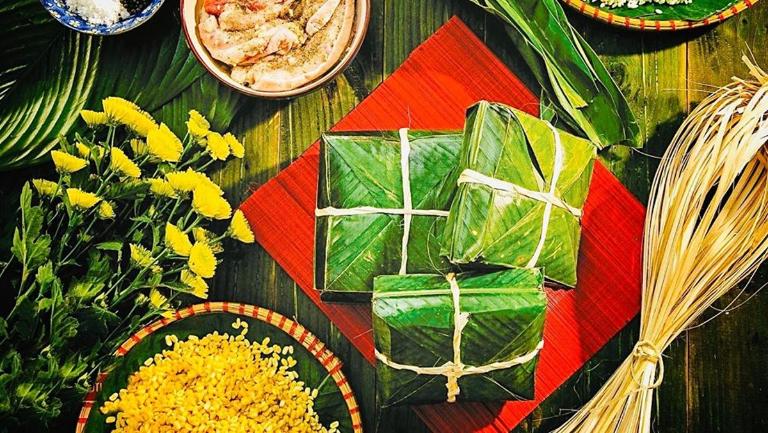
Families may spend hours or even days cooking these cakes, hence the preparation of them can be rather time-consuming. Traditionally, the process entails several generations of the family, so it is a valued hobby that fosters ties inside the family. Eating Banh Chung and Banh Tet during Tet honors the past and thanks Vietnam’s agricultural roots.
Other Symbolic Tet Foods
Apart from the famous Banh Chung and Banh Tet, numerous more foods are made for Tet, each with particular significance for the New Year. Among these dishes are some:
- Gio Lua (Vietnamese pork sausage): A savory dish symbolizing wealth and abundance.
- Xoi Gac (red sticky rice): The vibrant red color represents good fortune and happiness.
- Pickled onions and vegetables: These tangy side dishes help to balance the richness of the other Tet foods and symbolize a fresh start.
- Mut Tet (Tet candies and candied fruits): These sweet treats are often offered to guests during Tet and symbolize sweetness and joy in the new year.
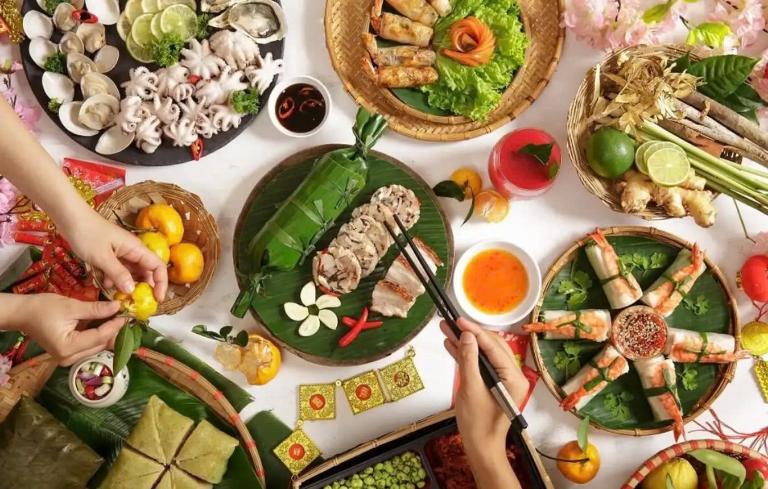
>>> Let’s see more: Hanoi Liberation Day: Celebrating Vietnam’s Historic Victory
Important Customs During Tet Nguyen Dan
Rich in symbolism and steeped in ancient customs many of which have been handed down through the years, Tet Nguyen Dan is a festival. The customs seen during Tet are meant to bring luck and greet a strong new year. Every custom has great meaning and symbolizes family values, reverence of ancestors, and rebirth.
Xong Dat: First Footing
Xong Dat, sometimes known as “First Footing,” is one of the most important rites during Tet Nguyen Dan. This custom starts on Lunar New Year’s Eve just after midnight. Vietnamese beliefs suggest that the fate of a house for the whole year depends much on the first person to enter it following the New Year. Families generally choose this person very deliberately depending on their zodiac sign, demeanor, and success in life.
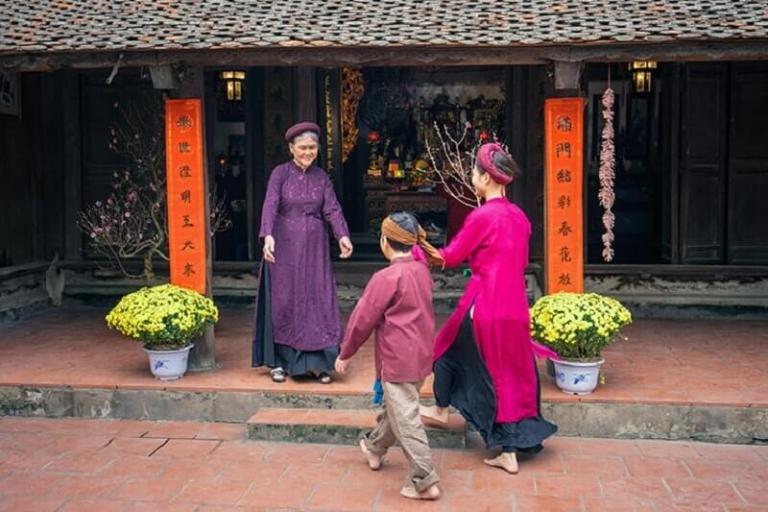
Giving and Receiving Li Xi (Lucky Money)
Exchange of Li Xi, or fortunate money, is another beloved habit at Tet Nguyen Dan. Children especially enjoy this custom since they get little red envelopes loaded with money from their parents. Giving Li Xi is a means for senior generations to impart blessings, health, and wealth to younger family members. Considered auspicious, the crimson envelopes represent riches and defense against evil spirits.
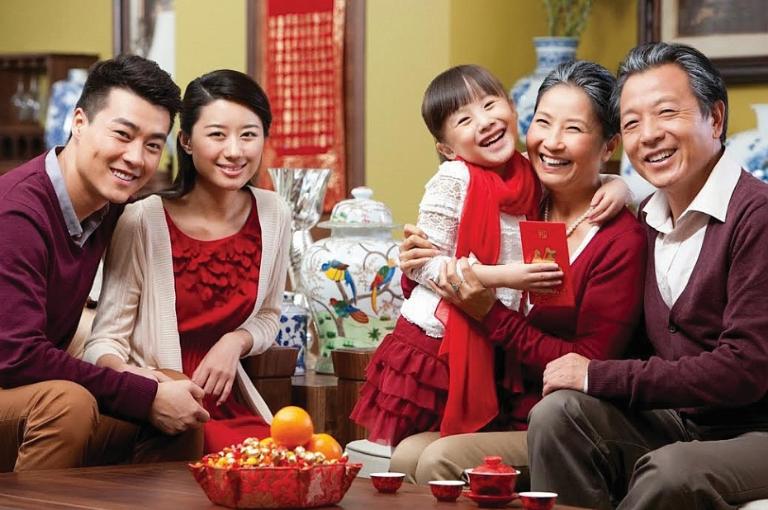
Offering Prayers to Ancestors
Honoring and remembering lost family members is central to Tet Nguyen Dan. Ancestral worship is very important in Vietnamese society, hence families offer particular prayers and offerings at their house altars during Tet. Fruit, flowers, and incense adorn these shrines so that the spirits of ancestors can accompany the family in commemorating the new year. Families hold that their ancestors keep an eye on them from the next world; so, expressing respect guarantees benefits and protection for the next year.
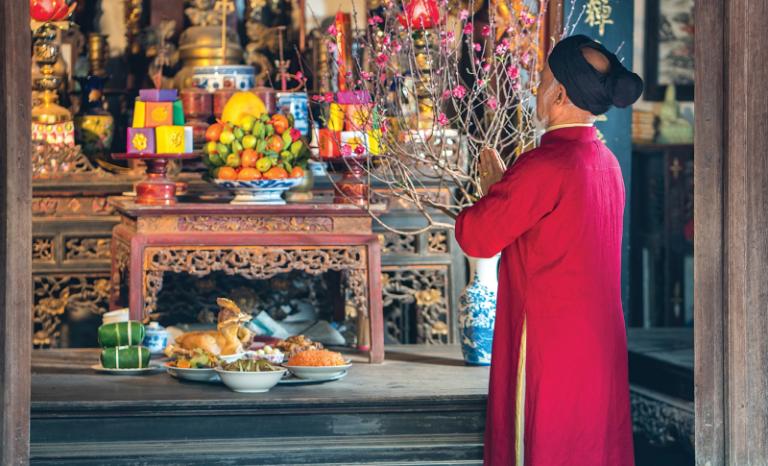
Visiting Pagodas and Temples
Seeing pagodas and temples is another important habit observed during Tet Nguyen Dan. Many Vietnamese people attend religious places, honoring the gods and praying for benefits in the new year after reuniting with family, during Tet. These trips allow one to pursue health, good fortune, and calm. To show their loyalty, people light incense, present fruit or flowers, and donate at the pagodas.
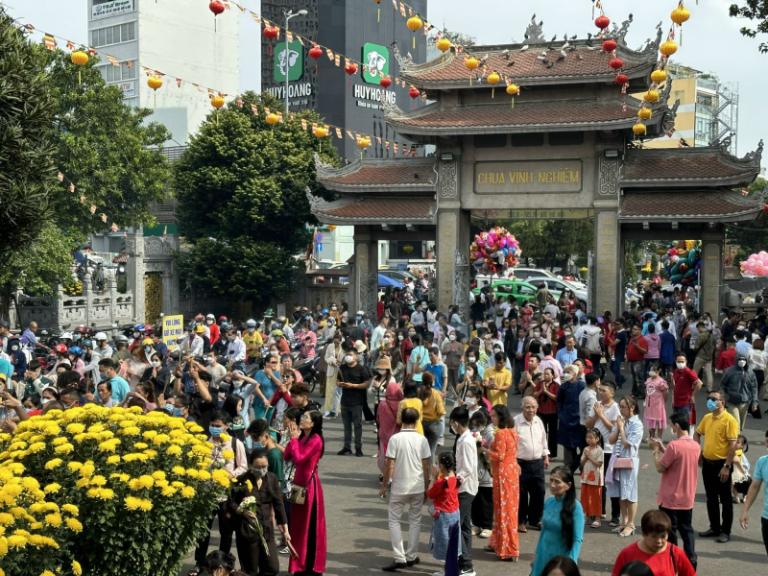
Tet Nguyen Dan is a deeply rooted aspect of Vietnamese culture celebrating family, legacy, and the optimism of fresh starts, not only a festival. Tet reminds us all of the value of looking back with thanks and moving forward with hope by means of its vivid colors, mouthwatering cuisine, and sincere customs.
Related posts:







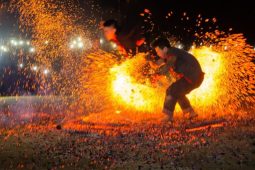
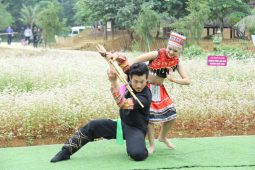
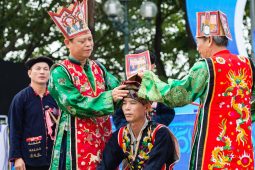

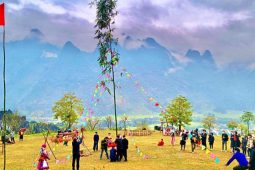

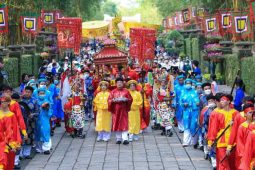
Be the first to comment!